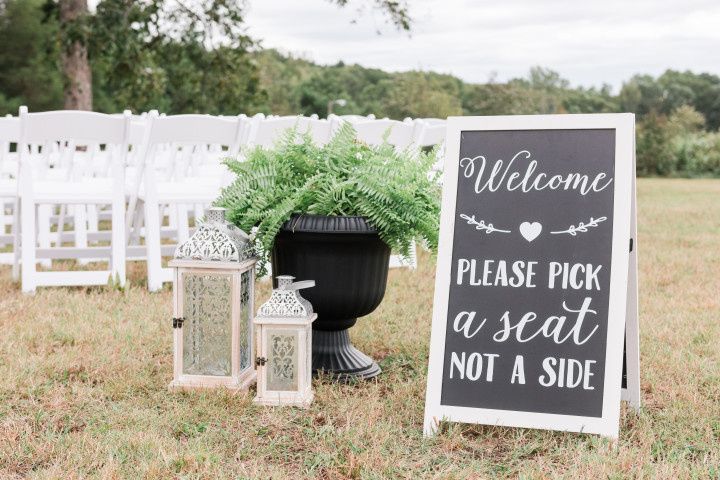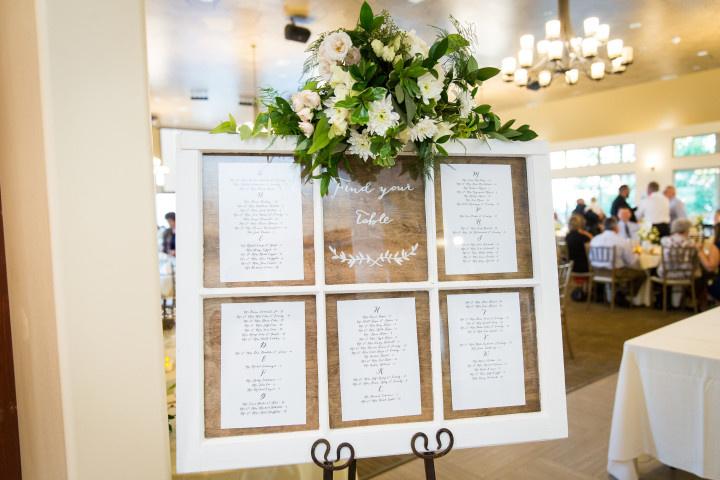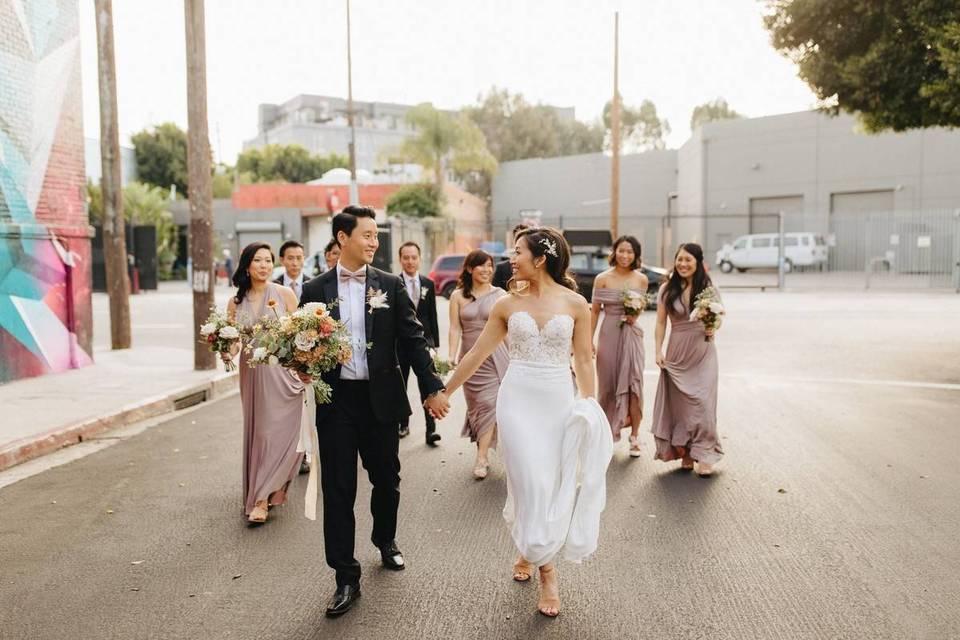How to Handle a Lopsided Wedding Guest List
Here’s how a lopsided wedding guest list will impact your wedding – and what you should do about it.

No matter how hard you and your partner try to split things 50-50, there’s a chance you might end up with a lopsided wedding guest list, where one of you is inviting more friends or family members than the other to your wedding. It sounds unfair, but uneven guest lists are actually quite common – especially if one of you comes from a larger family or the other prefers an intimate group of friends over a large crowd.
If you’ve found yourself with a lopsided wedding guest list and are in search of a way to even things out, these pro tips will help you handle the discrepancy.
How much does it actually matter?
This all depends on you, your partner, and any other parties involved in determining your guest count and budget (like your parents or in-laws). “If everyone understands up front that the list will be lopsided, and all parties are okay with it, ‘who the guests belong to’ doesn’t really impact any other parts of your planning, says Sabrina Torti of Proposing Dreams Weddings & Events in St. Louis, Missouri. “Whether you anticipate a lopsided wedding guest list or not, you should all sit down to discuss the budget and determine who pays for what or how they will contribute. If one family is footing the bill, they should lead the way in setting guest count ratios and everyone should follow from there.” Alexis Alvarez of Lillian Rose Events in Chicago, agrees. “I don’t know that uneven guest lists matter as much as they used to,” she says. “With couples dating and being engaged much longer than in the past, I see many families and friend groups coming together already blended by the time the wedding arrives.
How can you make sure everyone feels fairly represented?
Of course, weddings are emotional times, so it’s important to start out on equal footing as much as possible. Torti suggests splitting the guest list evenly, with 50 percent of the available guest count going to the couple and 50 percent going to the parents. “This means each set of parents would be able to invite 25 percent of the guest list,” Torti explains. “The non-hosting family should not go over their allotted amount unless invited to do so by the hosting family. If there are a large number of family members or the couple has a smaller group of friends than seats allotted, they can (or might have to!) absorb some of the invites their parents are hoping for into their portion of the guest count.”
Does a lopsided wedding guest list impact the budget?
The impact on budget depends on who is contributing to the cost of the wedding. “Today, many couples are paying for their own weddings with little to no family contribution,” says Alvarez. “When this is the case, regardless of how the couple handles personal finances, they should be contributing equally to the wedding fund. If you head into your marriage splitting ‘my family’ from ‘your family,’ it sets a precedent that can become problematic in the long term.” So even if you’ve got a few dozen friends on the list and your partner has just a handful, your financial contributions should be the same. However, Torti has a different suggestion when it comes to contributions from your parents. “If the non-hosting family needs to go over the number of guests they have been allowed, they should be careful to consider whether the space can accommodate more guests,” she says. “And more guests means higher costs for rentals and catering, so they should offer to contribute funds to cover the price of a higher guest count.”

What about where people are seated at the ceremony and reception?
Good news! “Bride’s Side” and “Groom’s Side” are a thing of the past. “A big trend is open seating at the ceremony, encouraging guests to pick a seat, not a side,” says Alvarez. “Couples want the blending of families to begin before the wedding even takes place.” Adds Torti, “With smaller guest lists than in the past, many wedding guests already know both halves of the couple, anyway. I instruct ushers to seat guests to fill space, and only seat people on a certain side if the guest asks or in the case of family members in the first few rows.”
When it’s time to sit for dinner, a seating chart is a puzzle no matter how your guest list breaks down. “I recently planned a wedding with 250 guests, 40 of which were guests of the groom’s parents,” says Torti. “It wouldn’t have made sense to scatter them throughout the room, so we did keep their group mostly together. I also had a wedding for 60 where dinner seating was arranged in logical groups, but we reseated guests for dessert, moving people to new tables to encourage mingling.” Alvarez agrees with keeping groupings as relational as possible, but has a few tips for those last few empty seats. “If you need to seat guests with people they don’t know very well, follow a few guidelines: 1. Make sure everyone has a buddy they know at their table. 2. Put your most social guests at the mixed tables. 3. Focus on great entertainment to get guests out of their seats, which should be the focus of the reception anyway!”
If you have a lopsided wedding guest list, how can you even it out?
Staring down a huge guest list and wondering how to cut it down can be intimidating, but there is a way – you just have to be a little ruthless. “The easiest way to shorten your guest list is an all-or-nothing policy,” says Torti. “For example, with your coworkers, invite just the bosses, just your department, just your closest co-workers, or none of them if you can’t get it down to a manageable number. The same goes for family: You could invite aunts and uncles but not cousins, which would keep the list short. In the end, ask yourself if you would be disappointed if this person wasn’t there, or if you’re inviting them out of obligation.”
Alvarez takes an opposite approach. “Start with a comprehensive list of everyone you would invite, in an ideal world with no space or budget restrictions. Then divide the list into three categories: VIPs (immediate family and the wedding party), close family and friends, and extended family, friends, and colleagues. From there, cut the people you haven’t seen or spoken to in over a year (and Facebook doesn’t count!). If you haven’t interacted personally with them in the past 365 days, you don’t have to invite them.” And know that some imbalances can’t be “fixed.” Whether it’s a discrepancy in family sizes or social circles, or the fact that some people won’t be able to travel to your wedding while others can easily make the journey, you may end up with more guests than your partner or vice versa. As long as everyone is comfortable and on the same page (and ready to celebrate!), it will all work out.





